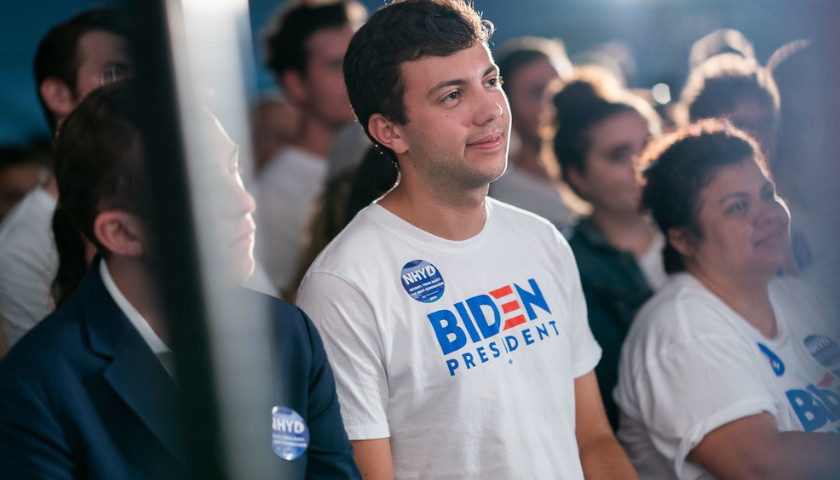by John Brabender
Now that the 2022 midterm elections are in the book, the post-election blame game for Republicans is underway. And there are plenty of explanations being suggested.
First is the group who say they never expected a “red wave.” Clearly their prognostication button had been on mute until now. Another group is blaming Republican opposition to early and mail-in voting. This may have had some effect, but a moderate one in comparison to 2020. For this, Republicans have no one to blame but themselves.
The final group has suggested that underperformance was due to nominating flawed candidates who were dragged over the primary victory line thanks to their endorsement by Donald Trump. In several cases, including the Pennsylvania gubernatorial race, this was absolutely accurate. But what I’m most surprised about is the continued lack of conversation regarding the impact younger voters are having on elections, almost certainly to Republicans’ detriment.
Shortly after the 2018 election, which was a disaster for Republicans, my firm looked under the data hood to see what went wrong. The obvious answer was that it was two years into Trump’s term, and as historically happens, the opposing party is the most motivated to show up. And, that they did.
But what also happened was that younger voters (18-29) showed up at an unprecedented level, the highest for a midterm in decades. And they voted Democrat by an almost two-to-one margin. Some proclaimed this would prove to be a one-time anomaly. It was anything but.
In the 2020 presidential election, younger voters increased their turnout by almost 11 points compared to 2016. And Biden won younger voters by a staggering 26 points. Some data experts said the increase in younger voter participation was the specific reason three states swung from red to blue. Game, set, match!
Then came the 2020 Georgia Senate runoff. There were an amazing 290,000 voters who showed up for the runoff but had not voted in the November presidential election. Some 220,000 of these were newly registered voters, with almost half under the age of 30, and they voted Democrat by a 31-point margin. Game over.
The numbers for the 2022 midterm were very similar to 2018, with a few exceptions. The national turnout by younger voters was down slightly, but not in the most competitive states. The turnout in 2022 among younger voters skewed more female and non-white, and therefore, more Democrat. In many cases, their support of Democratic candidates was overwhelming.
In the Pennsylvania Senate race, for example, John Fetterman received 70% of votes from those under 30 years of age. In New Hampshire, Maggie Hassan received 74% of younger votes. And in Arizona, Mark Kelly received more than three out of four votes cast by someone under 30. Republicans lost the battle for the Senate thanks to younger voters.
The reality is that the perfect storm is heading Republicans’ way, while many GOP party leaders, committees, and right-leaning organizations seem oblivious. There are three main factors for the oncoming threat. First, Millennials and Gen-Z are now the largest voting bloc, with Gen-Z the largest and most diverse segment in history and their impact increasing.
Second, these audiences are increasingly becoming politically engaged, and solidifying their political ideology at a much earlier age than previous generations – thus becoming increasingly harder to influence as they get older.
And finally, there is a dramatic increase in the amount of video content and social interactions educating, unifying, and motivating today’s younger voters. It’s a place where Republicans not only rarely have a voice, but too often are simply the punchline. It’s resulting in a tarnished Republican brand among these voters.
Consider this: Younger voter are seven times more likely to get their political news on TikTok than on cable news.
There are many steps Republicans can take to begin rectifying this problem. These include putting more of our younger and more diverse voices forward; having a legitimate plan for issues younger voters care most about, like climate change; spending more time developing our brand and less on endless attack ads; conducting research focused on better understanding how to talk to younger voters; utilizing schools, college campuses, and churches to recruit brand ambassadors and volunteers; and increasing long-term brand-building expenditures on digital platforms and youth influencers. And if TikTok is taken off the table for privacy and security reasons, we’d better have a good alternative.
The only strategy that won’t work is the one Republicans have now.
– – –
John Brabender is chief strategic and creative officer at BrabenderCox, a Republican media consulting firm. His past clients include Vice President Mike Pence, former New York City Mayor Rudy Giuliani, and a significant number of senators, governors, and House members.
Photo “Young People Supporting Joe Biden” by Joe Biden. CC BY-NC-SA 2.0.





